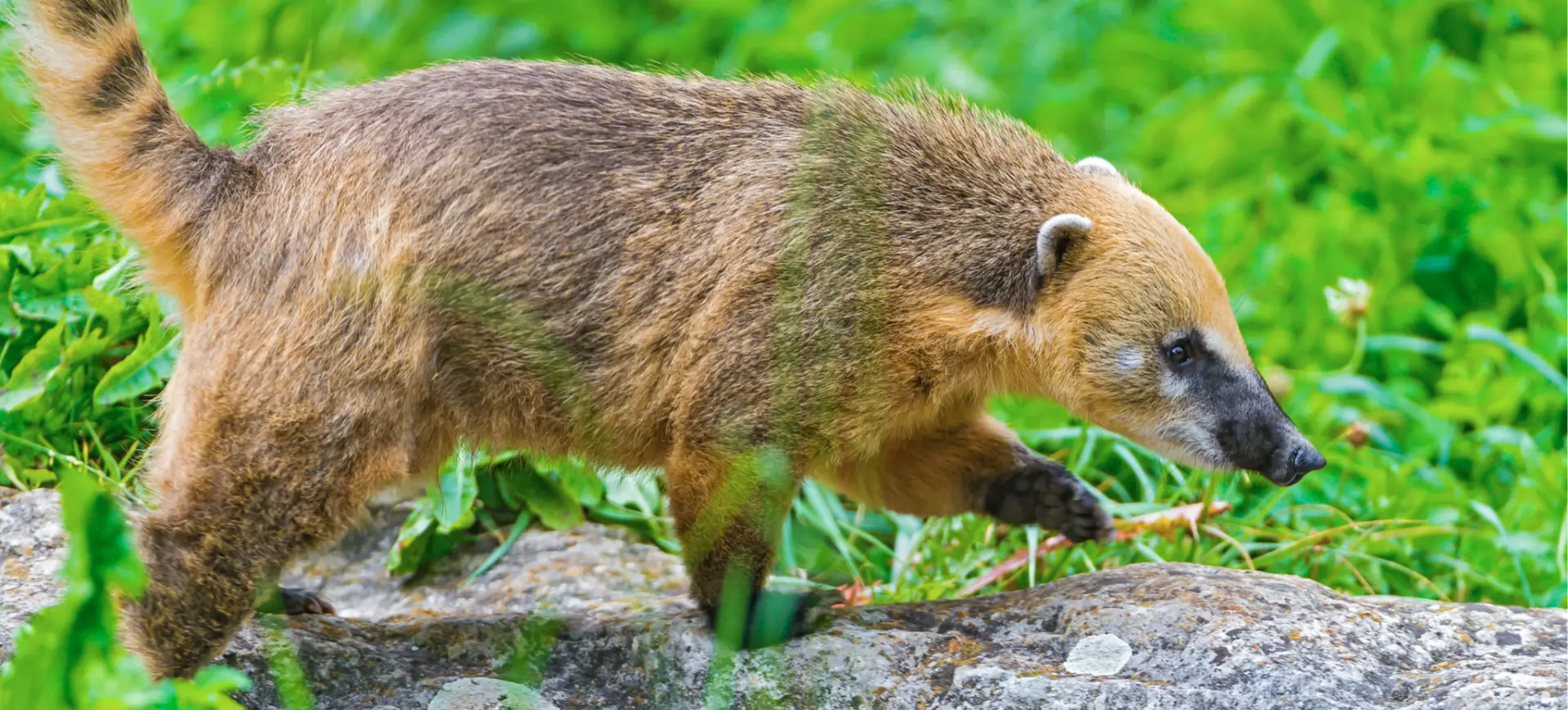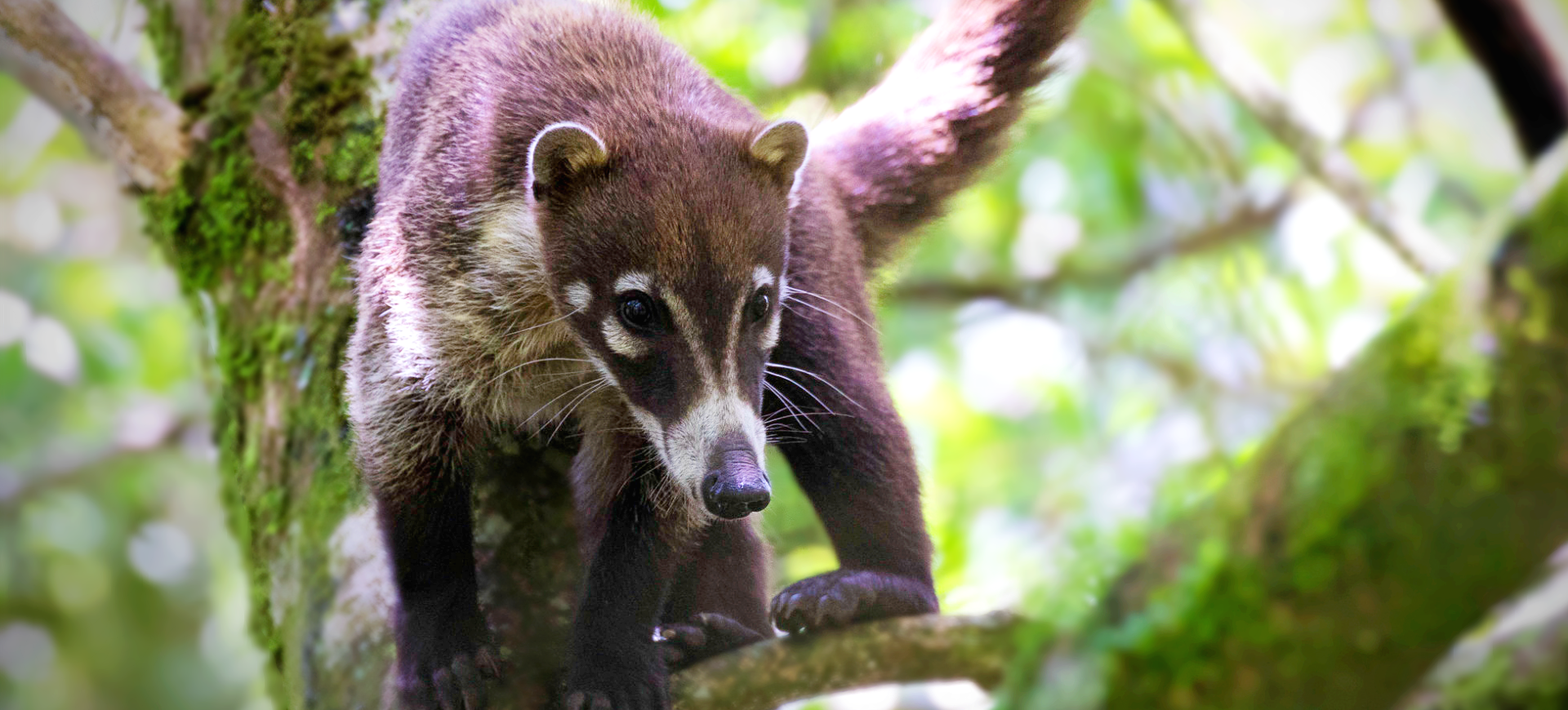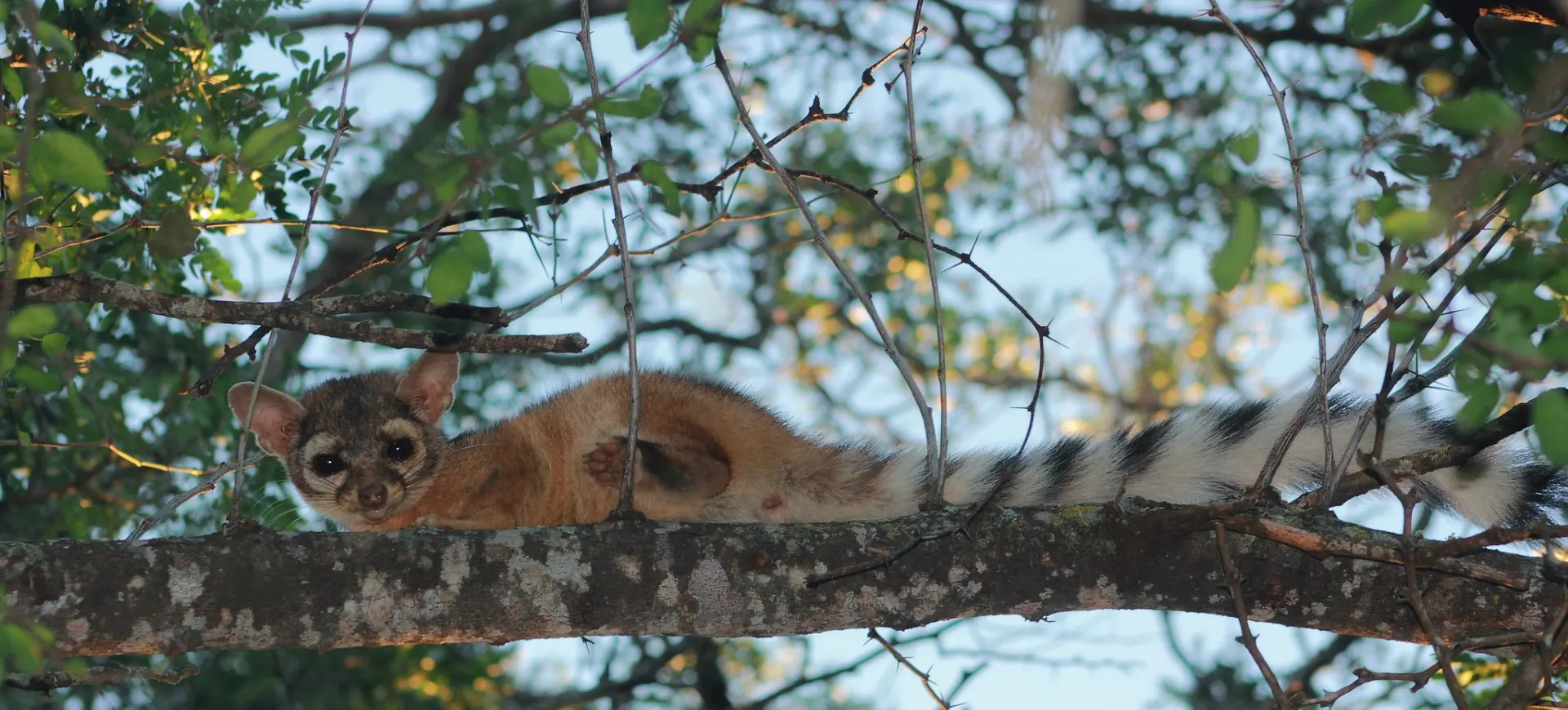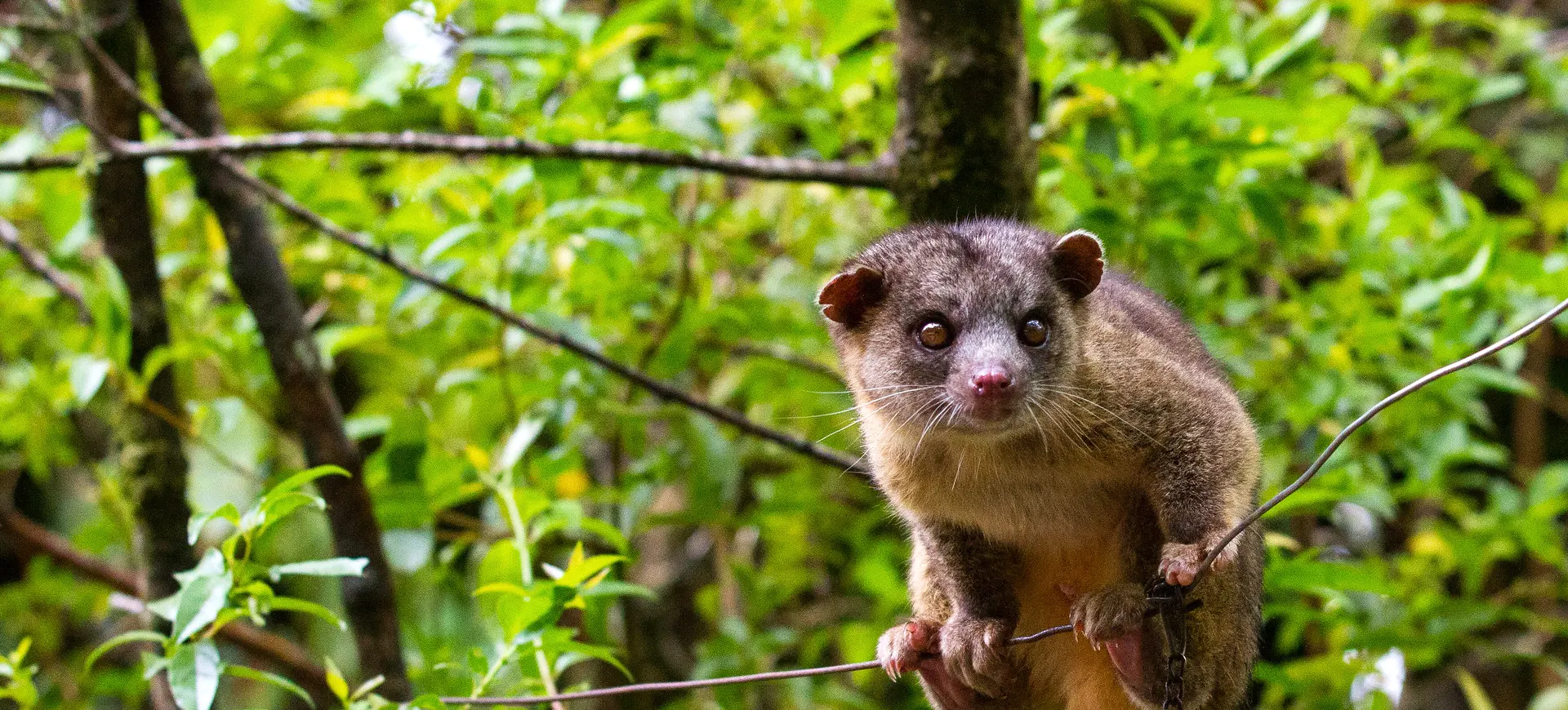Overview
The Raccoon (Procyon lotor) is a medium-sized mammal native to North America, recognized for its distinctive facial mask and ringed tail. These nocturnal creatures are highly adaptable and known for their intelligence and talent. Raccoons have sturdy bodies of about 16 to 28 inches long and bushy tails that add another 8 to 16 inches. Their fur is generally grayish, mixing black, white, and brown.
Raccoons are characterized by their highly dexterous front paws and long fingers, which they use with great skill. A dense concentration of sensory nerves in their front paws enhances their sense of touch, which is particularly useful when foraging. Raccoons are famous for ‘washing’ food and rubbing and rolling items in their paws, possibly to remove unwanted parts. They have a varied diet, feeding on fruits, nuts, insects, small animals, and human leftovers.
These animals are incredibly adaptable, thriving in forests, mountains, marshes, and urban areas. Raccoons are known for their ability to live close to humans, often scavenging in garbage cans and causing mischief. Despite their cute appearance, they can be aggressive if cornered and are known carriers of various diseases, including rabies.
Taxonomy
Kingdom
Phylum
Class
Order
Family
Genus
Species
Sub Species
Type
Physical Description:
Raccoons have a stocky build, a broad head, and a short muzzle. Their most distinct features are the black mask across their eyes and the alternating black and white rings on their tails. Their dense and insulating fur protects them against cold weather. Their fur is predominantly gray but can vary from reddish to brownish, with lighter fur on the belly.
Their paws resemble human hands in talent, allowing them to open jars and doors and untie knots. Each of their front paws has five fingers, which they use precisely. Raccoons have sharp, non-retractable claws that aid in climbing. Despite their clumsy appearance, they are agile and capable climbers.

Lifespan: Wild: ~3 Years || Captivity: ~10 Years

Weight: Male: 14-23 lbs (6.4-10.4 kg) || Female: 8-18 lbs (3.6-8.2 kg)

Length: Male & Female: 24-38 inches (61-97 cm)

Height: Male & Female: 9-12 inches (23-30 cm)

Top Speed: 15 mph (24 km/h)
Characteristic:
Native Habitat:
Raccoons are native to North America and inhabit many habitats, including deciduous forests, mangroves, marshes, prairies, and urban areas. They are highly adaptable and can live near humans. Raccoons use tree hollows, abandoned burrows, or rock crevices as dens.
Raccoons are skilled climbers and swimmers, aiding their survival in various environments. Thanks to their dense fur and fat reserves, they can also live in cold climates.
Climate Zones:
Biogeographical Realms:
Continents:
Countries:
Diet:
Diet & Feeding Habits:
Raccoons are omnivores with a highly diverse diet. They eat fruits, nuts, berries, insects, worms, small mammals, birds, eggs, and amphibians. In urban areas, they are known to raid garbage cans and pet food. Their diet changes seasonally, with more animal prey consumed in spring and more plant matter in summer and fall.
Their foraging behavior is highly adaptable, relying on their sense of touch and smell. Raccoons are known for their ‘washing’ behavior, not for cleanliness but to gather sensory information about the food. They are opportunistic feeders and will eat almost anything available and easy to obtain.
Mating Behavior:
Mating Description:
Raccoons have a polygynous mating system, where males may mate with multiple females. The mating season occurs in late winter, typically peaking in February and March. During this time, males become more aggressive and roam widely in search of females.
After a gestation period of about 63 to 65 days, the female gives birth to a litter of 2 to 5 kits. The kits are born blind and helpless, depending entirely on the mother for care. The mother raises the kits in a den, and they remain with her for several months, learning necessary survival skills. Kits become independent at about 6-9 months of age.
Reproduction Season:
Birth Type:
Pregnancy Duration:
Female Name:
Male Name:
Baby Name:
Social Structure Description:
Raccoons are generally solitary except during the mating season or when a mother raises her young. They are territorial, with each raccoon having its home range. These ranges can overlap, but direct interaction is minimal outside of mating.
Raccoons communicate through sounds, including hisses, growls, and screams, particularly during mating season. They are mostly nocturnal, spending the day resting in their dens and becoming active at dusk.
Groups:
Conservation Status:
Population Trend:
Raccoons are abundant in the wild, especially in North America. Their population is considered stable and even increasing in some areas. Their adaptability to various habitats, including urban environments, contributes to their successful population status. However, in areas where they have been introduced, such as Europe and Japan, their impact on local ecosystems is a concern.
Due to food availability and lack of predators, raccoons in urban areas often have higher population densities than in natural habitats. This can lead to conflicts with humans and can result in the spread of diseases.
Population Threats:
While raccoons are not currently at risk of extinction, they face several environmental and human-induced threats. Habitat destruction, particularly in urbanizing areas, leads to the loss of their natural living and foraging spaces. Hunting for fur and, in some areas, for sport or population control also poses a significant threat to raccoon populations. Road accidents frequently cause mortality for raccoons, as they often forage in populated areas and crossroads in search of food.
In urban and suburban settings, raccoons are frequently considered pests due to their habit of rummaging through garbage, damaging property, and their potential to carry diseases. They are often subjected to various control measures, including trapping and relocation or euthanasia. Raccoons are carriers of several diseases that can be transmitted to humans and pets, including rabies, roundworm, and leptospirosis.
Conservation Efforts:
Conservation efforts for raccoons are generally limited, as their populations are stable and even growing in many regions. However, targeted control programs are implemented in areas where raccoons are considered invasive, such as in parts of Europe and Japan. These programs aim to manage raccoon populations to mitigate their impact on native species and ecosystems. Control methods often include habitat management, humane traps, and, in some cases, culling, especially in sensitive ecological areas where they pose a significant threat to native biodiversity.
Additionally, conservationists emphasize the importance of public education to manage conflicts between raccoons and human communities. Educational programs focus on responsible trash management to prevent attracting raccoons into urban areas, the importance of not feeding wild raccoons and awareness about their potential health risks. In some regions, efforts are also made to research raccoon behavior and ecology, which aids in developing effective, humane strategies for coexistence and population management.
Additional Resources:
Fun Facts
- Raccoons can rotate their hind feet 180 degrees, which helps them climb down trees headfirst.
- Their dexterous front paws resemble human hands used to examine and manipulate objects.
- Raccoons have a highly developed sense of touch that becomes even more sensitive when wet.
- They have excellent night vision and a keen sense of hearing, aiding their nocturnal activities.
- Raccoons are known for their intelligence, with studies showing their ability to remember solutions to tasks for up to three years.
- Despite their mischievous nature, raccoons play an important role in ecosystems as seed dispersers and controllers of insect populations.
- Raccoons have a wide range of vocalizations, with over 200 different sounds documented.
- In winter, raccoons can sleep for long periods but do not hibernate traditionally.
- They are strong swimmers and often forage near water bodies.
- Raccoons are among the few wildlife species that thrive in urban locations.
















